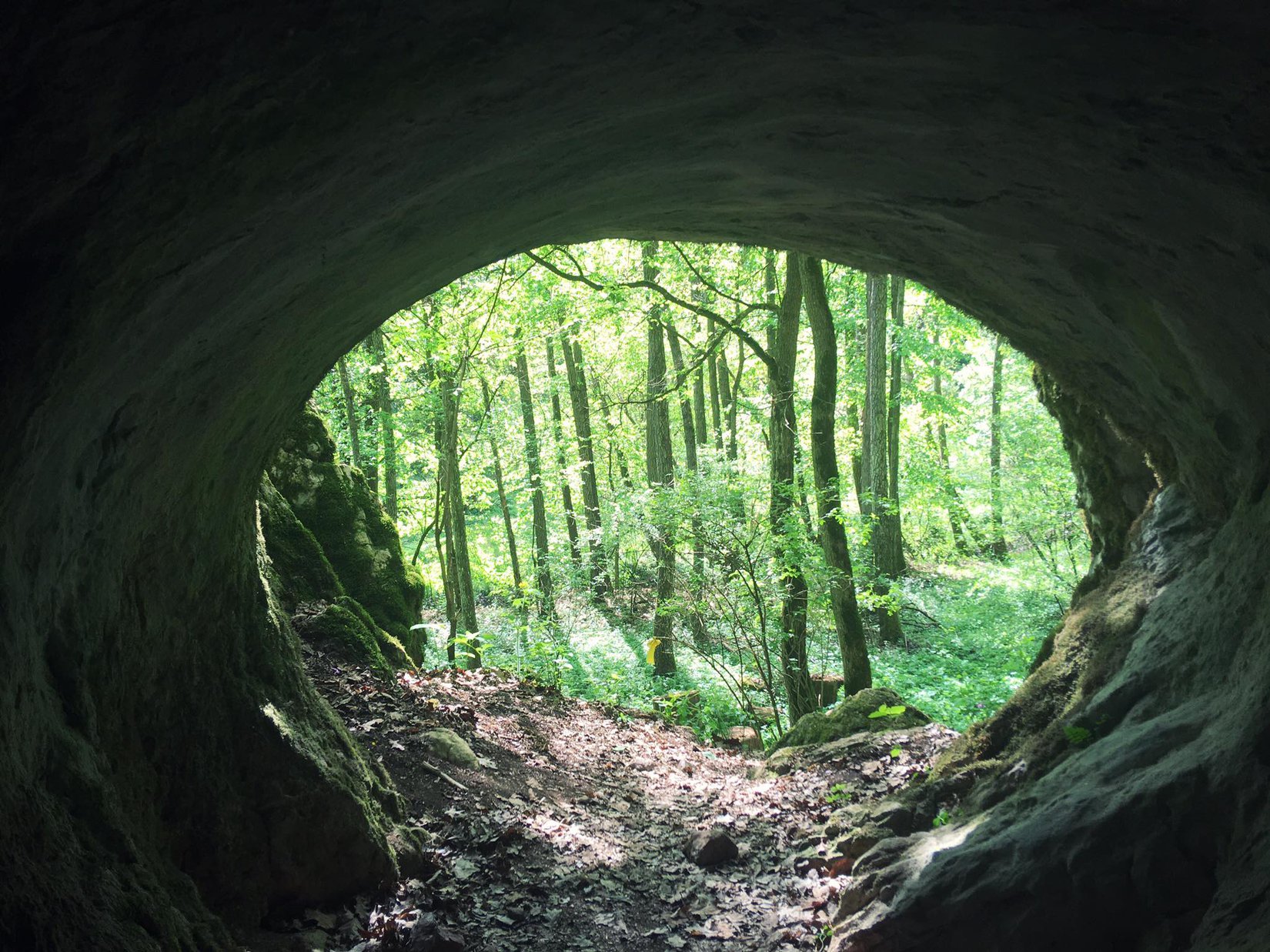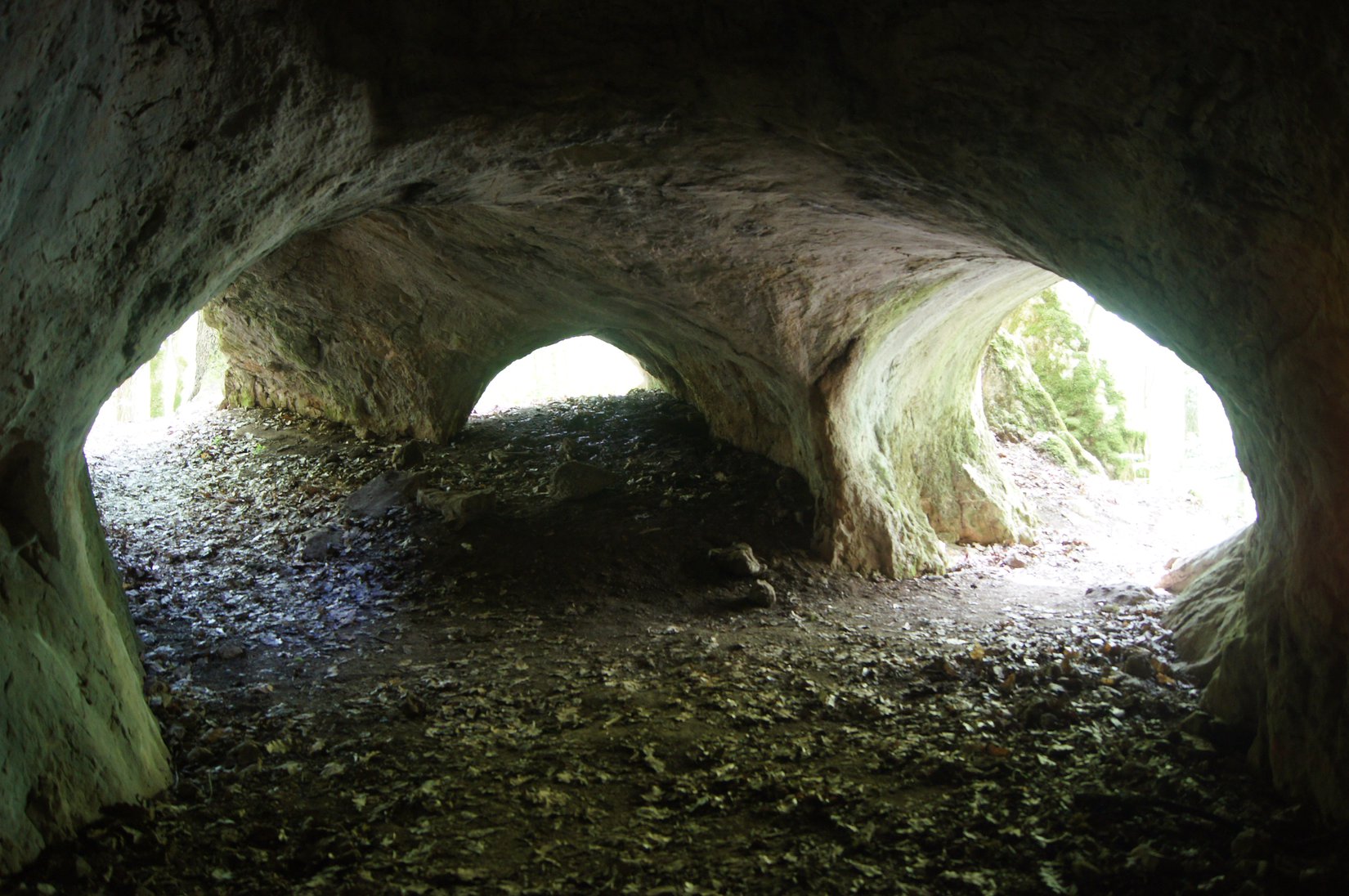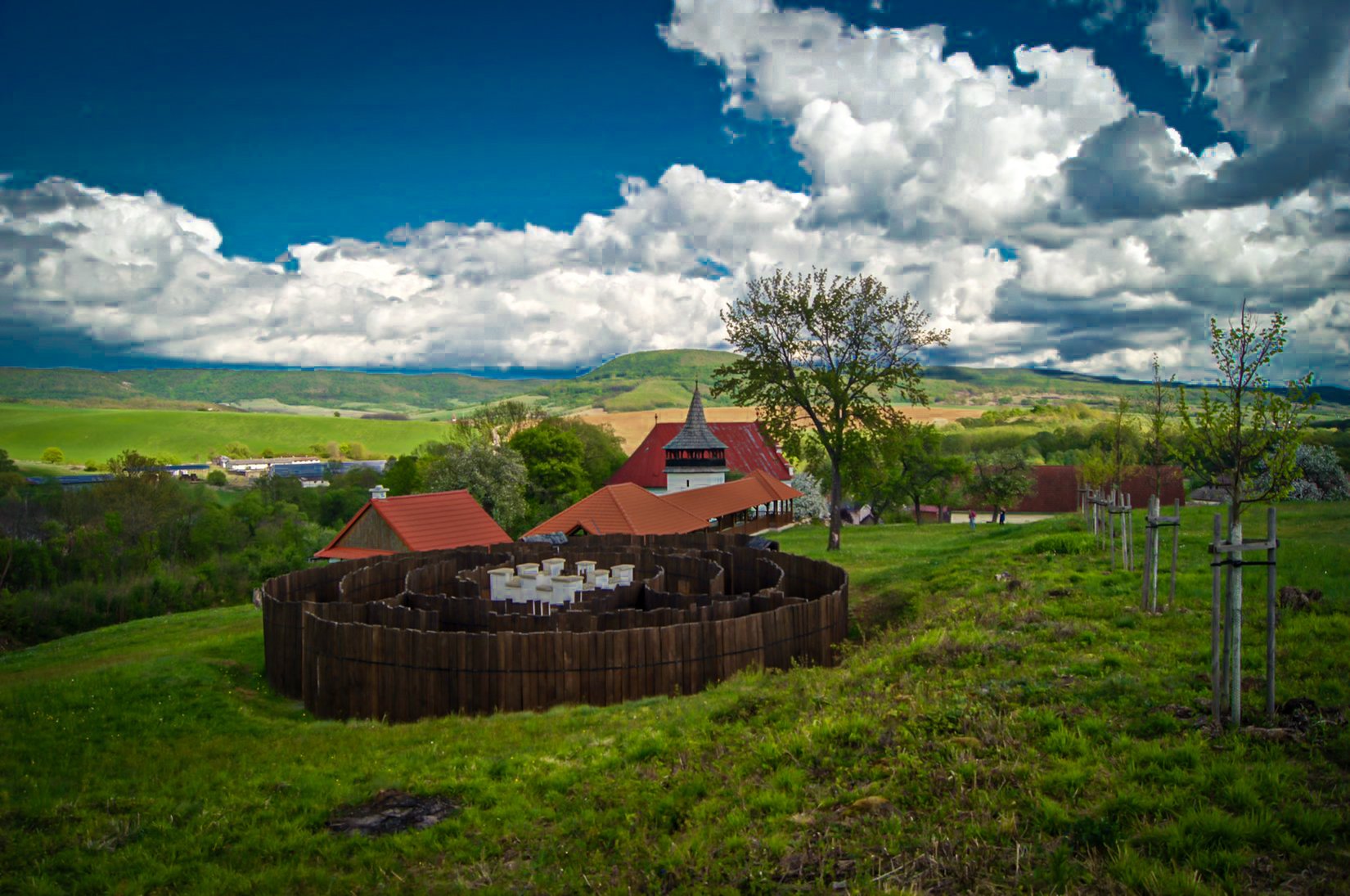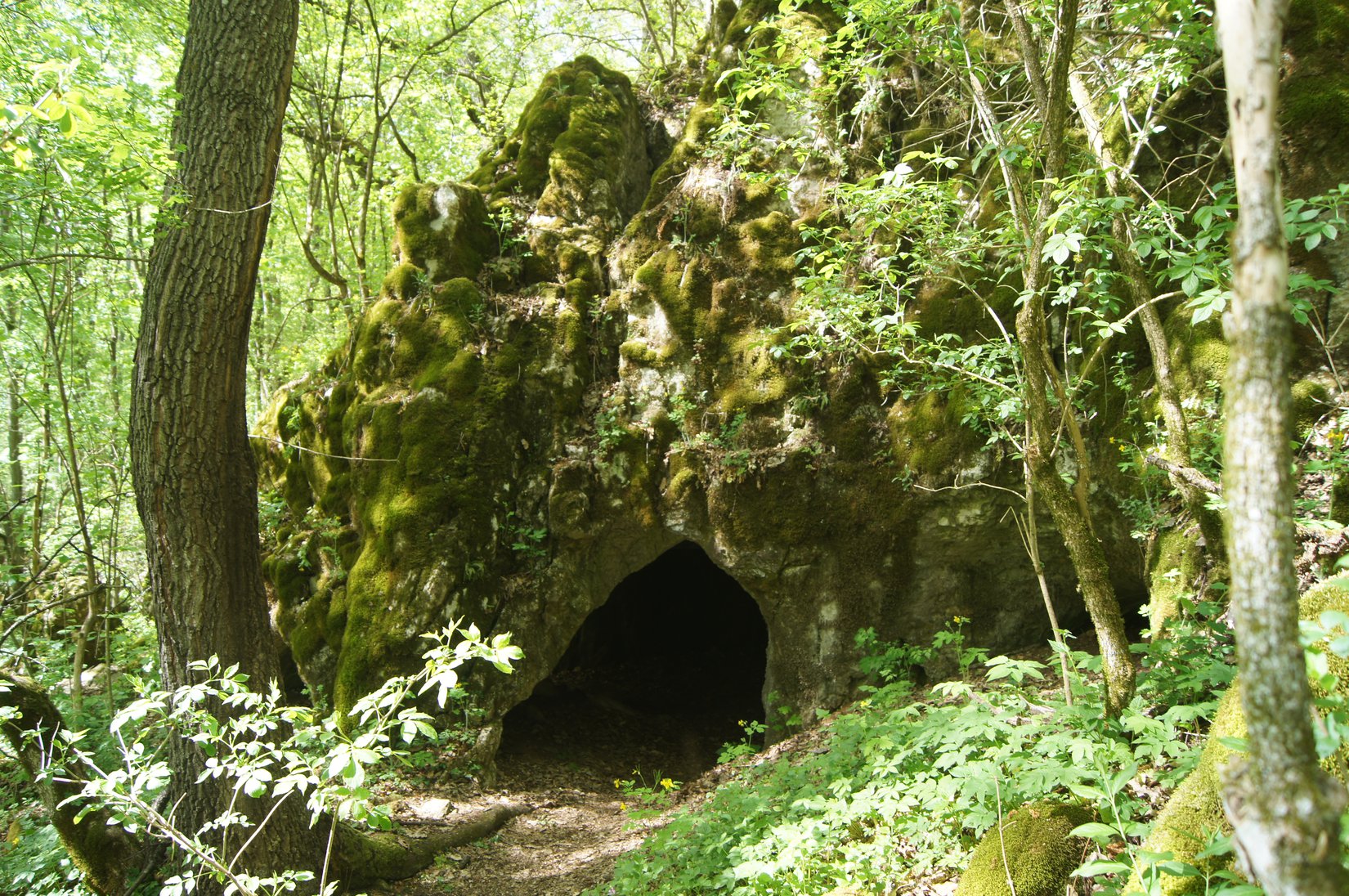
Educational trail Drienčanský karst
The trail starts outside the karst area, in the village of Teplý Vrch, from where it goes to Drienčany through the Hickory Grove protected area. It was artificially created at the end of the 19th century, when North American trees - hickory - were planted here, which successfully acclimatized. Next, you walk around the Teplý Vrch water reservoir, by the bank of which there is a bird lookout.
The educational trail can also be started in Drienčany itself, where from stop no. 4 continues as a circuit. It is skillfully made up of 15 stops with information panels that will introduce you to the most characteristic natural features of the karst. The most attractive stop (especially for children) is the Malá Drienčanská cave, the initial part of which is passable. The writer Ľudovít Kubáni also mentions it under the name Brožkova pustovňa in his novel Valgatha. Also impressive is the deep sinkhole created by the collapse of part of the ceiling of the Great Drienčany Cave, to the entrance of which the educational trail goes.
The footpath in the village of Drienčany is complemented by other attractions, such as a sundial, a wooden fairy-tale labyrinth, or the memorial parsonage of Pavel Dobšinský, near which he is buried. The total length of the educational trail starting in the village of Teplý Vrch is 7.5 kilometers. The karst circuit starting and ending in Drienčany is approximately 2.9 km long.
The entire Drienčanský karst with an area of 16 km² forms a kind of picturesque karst island between the Muránská plateau and the Slovak karst. It is made up mainly of limestone, which was created as a remnant of the sea coast. There are a large number of springs and springs on its territory. Among the largest is the Hrušovský prameň spring with a yield of up to 15 liters per second.
Also interesting are the karst lakes, which are created by plugging the cracks, which keeps rainwater in the karst pits. Four of these can be found in Drienčany (just 200 m above Dobšinský parish), one is located north of Španie Pole.
In addition to the well-known Drienčany caves, the Frontová jaskyňa, Cave pri Holom vrchu, Dúbravica cave and in 1991 the Nad Kadlubom cave were gradually discovered in the last century, which in connection with the Podbanište cave near the village of Slizké creates a 1570m long cave system, the longest in the Drienčany karst.
Several protected and rare species of fauna occur in the karst area. Among the smallest and critically endangered species, Apalus bimaculatus is worth mentioning. This tiny beetle, also known as the messenger of spring, besides being able to withstand frost and fly in strong winds, is interesting because it secretes poisonous haemolymph from its joints, which is fatal for humans in as little as three hundredths of a gram. In the Middle Ages, the Medici family used it to kill their noble enemies. The social value of one bug is €140.
The flora is abundantly represented by medicinal herbs, such as motherwort or rare gray mint, several types of orchids such as purple sedge, or broad-leaved sedge and one Carpathian endemic - Transylvanian pea. The banks of the river Blh are decorated with ostrich fern, our largest species of fern. You can also admire it directly from the educational trail Drienčanský karst.
The territory of the Drienčany Karst belongs to the management of the PLA Cerová vrchovina.
Kategórie: #Nature



